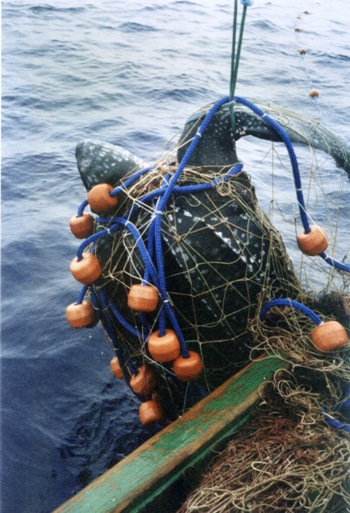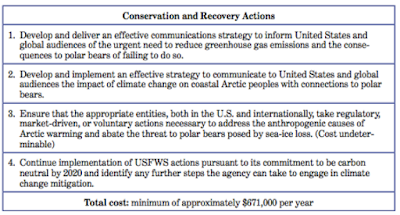Columbia Basin Pygmy Rabbit
By: Julia Nurse
Who is the Columbia Basin Pygmy Rabbit?
The Pygmy Rabbit is the smallest and quite possibly the cutest rabbit in North America.
It can fit into the palm of your hand as they usually weigh less than a pound. They are one of two North American Rabbits that dig their own burrows which are very extensive, having interconnecting chambers with multiple entrances. The entrances are usually located at the base of sagebrush shrubs which are very important to their survival as they are the pygmies main source of shelter and food. The Pygmy Rabbit hunted by weasels, coyotes, foxes, and occasionally hunters who mistake them for other rabbit species.
It can fit into the palm of your hand as they usually weigh less than a pound. They are one of two North American Rabbits that dig their own burrows which are very extensive, having interconnecting chambers with multiple entrances. The entrances are usually located at the base of sagebrush shrubs which are very important to their survival as they are the pygmies main source of shelter and food. The Pygmy Rabbit hunted by weasels, coyotes, foxes, and occasionally hunters who mistake them for other rabbit species.
Their Geography and Population Over Time
There are other species of pygmy rabbits across the West, but the Columbia Basin species has been geographically separated from them and is genetically distinct. Ten thousand years ago, glacial
 movement isolated the Washington population and made them unique and distinct subspecies from other North American rabbit populations. Today, Pygmies are located in the Columbia Basin ecosystem which stretches from Northern Oregon to Central Washington. Sadly, in 2001, a statewide survey found that there were less than 30 Pygmies left in the Columbia Basin.
movement isolated the Washington population and made them unique and distinct subspecies from other North American rabbit populations. Today, Pygmies are located in the Columbia Basin ecosystem which stretches from Northern Oregon to Central Washington. Sadly, in 2001, a statewide survey found that there were less than 30 Pygmies left in the Columbia Basin.
 movement isolated the Washington population and made them unique and distinct subspecies from other North American rabbit populations. Today, Pygmies are located in the Columbia Basin ecosystem which stretches from Northern Oregon to Central Washington. Sadly, in 2001, a statewide survey found that there were less than 30 Pygmies left in the Columbia Basin.
movement isolated the Washington population and made them unique and distinct subspecies from other North American rabbit populations. Today, Pygmies are located in the Columbia Basin ecosystem which stretches from Northern Oregon to Central Washington. Sadly, in 2001, a statewide survey found that there were less than 30 Pygmies left in the Columbia Basin.
After it was found that there were only 30 Pygmy Rabbits left in the wild they received an emergency listing as endangered species in 2001 and were fully listed in 2003.
You can read more about their habitat from from the National Wildlife Magazine here.
You can read more about their habitat from from the National Wildlife Magazine here.
Main Threats
 A main threat to the long-term decline of the Pygmy Rabbits is the on-going conversion of its food and shelter into land for agriculture development. The Sagebrush-steppe habitat once spread over 155 millions acres. It it is estimated that of the original shrub steppe habitats in the Columbia Basin, 60% has been converted!
A main threat to the long-term decline of the Pygmy Rabbits is the on-going conversion of its food and shelter into land for agriculture development. The Sagebrush-steppe habitat once spread over 155 millions acres. It it is estimated that of the original shrub steppe habitats in the Columbia Basin, 60% has been converted! Although, this is likely not the only reason for its decline. In 2001 the Pygmy Rabbits became much more vulnerable because of their low population size. Once a species reaches a certain threshold of low population numbers it is much more vulnerable to catastrophic natural events, disease, etc. The west has experienced more wildfires in recent years and this has likely contributed to their decline as well as a loss of genetic diversity and inbreeding of the Columbia Basin Pygmies.
Click here learn more about the Sagebrush Steppe habitat.
Pygmy Rabbit Breeding Program
In 2001, the Washing Department of Fish and Wildlife began a captive breeding program with 16 of the last 30 Columbia Basin Pygmy Rabbits. The captured pygmies were put in breeding programs in the Oregon Zoo, Washington University and Northwest Trek Wildlife Park. The remaining Pygmies left in the wild were not considered essential to the captive breeding program and efforts to manage them in the wild were continued. The breeding programs were largely unsuccessful due to their short breeding season and that they only produce one to three litters a year.
Since the breeding of the pure Columbia Basin Pygmy was unsuccessful, they were cross bred with the Idaho Pygmy Rabbits in 2003. They were deemed compatible as the cross-breeding was
successful and it became an integral part of the rescue plan. Between 2007 and 2011, more than 70 captive-bred rabbits were released to the Sagebrush Flat Wildlife Area in Washington. They were placed in a 6 acre mesh enclosure to protect them from predators and to help with their transition back into the wild.
successful and it became an integral part of the rescue plan. Between 2007 and 2011, more than 70 captive-bred rabbits were released to the Sagebrush Flat Wildlife Area in Washington. They were placed in a 6 acre mesh enclosure to protect them from predators and to help with their transition back into the wild.
For the first time in a decade the Columbia Basin Pygmy Rabbit bred and produced offspring in its original range in 2011. It was a big achievement in the already 12 year recovery process! However, the Pygmies are still endangered and the Washington Fish and Wildlife Service is monitoring the population in the wild as well as more populations that are being bred in captivity.
How and Why to Help
You can help the Columbia Basin Pygmy Rabbit by raising awareness of the destruction and
fragmentation of their habitat, the Sagebrush shrub-steppe. Rabbits play a critical role in their habitat as they are a source of food for many species, such as, owls, coyotes, hawks, foxes, etc. More importantly we have a responsibility to help the pygmies recover because we as humans have played a role in their decline. Besides, who wouldn't want to help these adorable little creatures?
You can support the Oregon Zoo which has made huge contributions to the conservation of the Columbia Basin Pygmy Rabbit!
Sources:
http://ecos.fws.gov/docs/recovery_plan/Columbia%20Basin%20Pygmy%20Rabbit%20Final%20RP.pdf
http://animaldiversity.org/accounts/Brachylagus_idahoensis/
http://www.oregonzoo.org/conserve/fighting-extinction-pacific-northwest/columbia-basin-pygmy-rabbits
http://www.oregonlive.com/environment/index.ssf/2013/01/columbia_basin_pygmy_rabbit_re.html
You can support the Oregon Zoo which has made huge contributions to the conservation of the Columbia Basin Pygmy Rabbit!
Sources:
http://ecos.fws.gov/docs/recovery_plan/Columbia%20Basin%20Pygmy%20Rabbit%20Final%20RP.pdf
http://animaldiversity.org/accounts/Brachylagus_idahoensis/
http://www.oregonzoo.org/conserve/fighting-extinction-pacific-northwest/columbia-basin-pygmy-rabbits
http://www.oregonlive.com/environment/index.ssf/2013/01/columbia_basin_pygmy_rabbit_re.html
Brachylagus idahoensis
Brachylagus idahoensis Brachylagus idahoensis



















